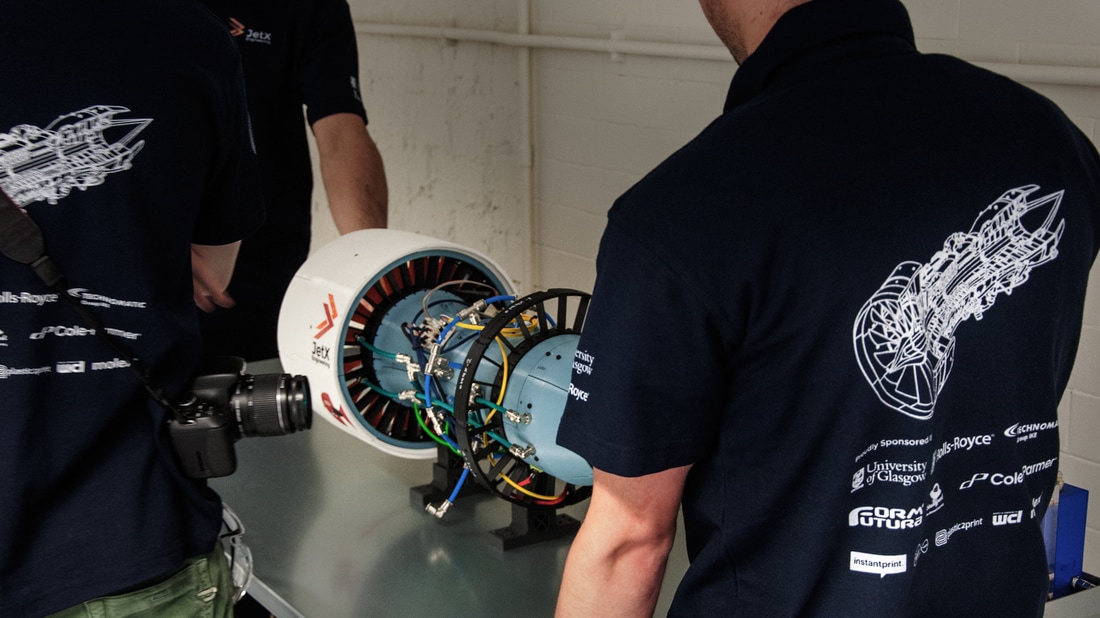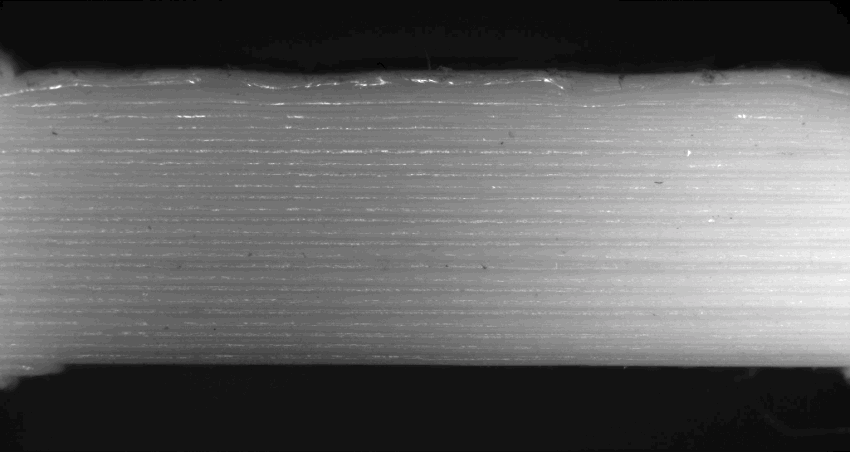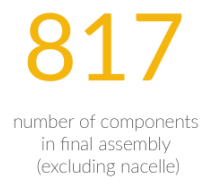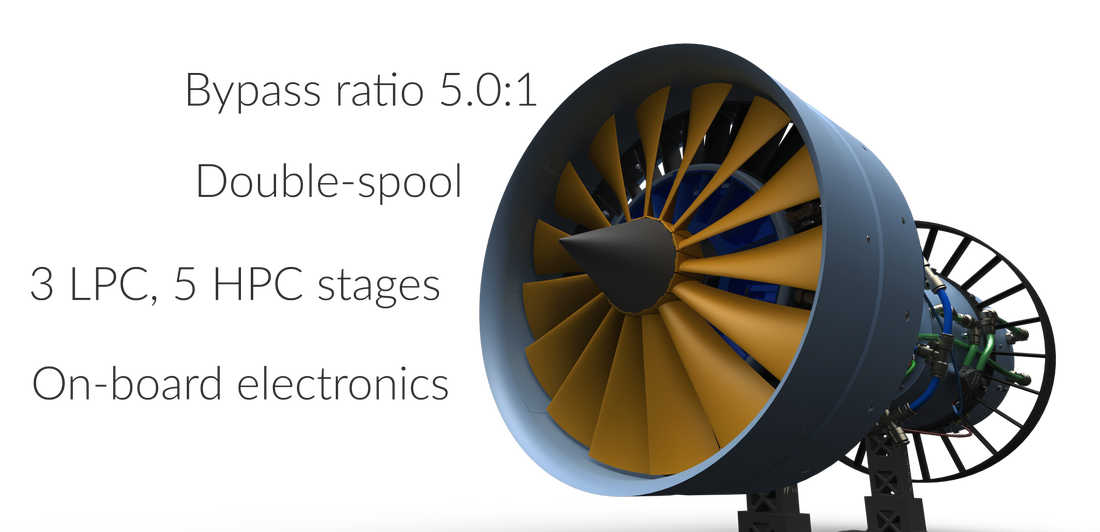|
Our first ever presence in a trade fair has been a great success, as dozens of people from industry, academia and the public visited us to find out more about our work and projects!
Over three days, we displayed the first 3D-printed jet engine model to feature an integrated monitoring system at the 22nd TCT Show held at the NEC in Birmingham. The expo saw a wide range of manufacturers and suppliers come together, exhibiting new technologies, impressive 3D-prints and unveiling new potentials for cooperations. We were delighted by the interest from the public, academics from UK universities and professionals from the additive manufacture, materials, aerospace, electronics and engineering services industries. We are looking forward to turning these contacts into partnerships in the future that will help us further advance our engine development programmes and promote our work. Finally we would like to thank Arnold, Edgar and Dolf from Formfutura for hosting us and for giving us this fantastic opportunity to exhibit our work! It was great fun to spend three extremely busy days with the team and we hope to be back for TCT 2018! JetX will be attending the 22nd TCT Show hosted at the NEC in Birmingham from the 26th to the 28th of September!
TCT Show is one of the world’s leading events focused on 3D manufacturing technologies and in it continues to deliver business-critical insights on 3D printing, additive manufacturing, CAD/CAE, metrology and inspection. By bringing together dozens of inspirational speakers, an expansive show floor with over 250 exhibitors, ground-breaking product launches, specialist technology tracks, a dedicated start-up zone and many more interactive show floor attractions, TCT Show continues to set the agenda for the industry. This year we are kindly hosted by our sponsor, Formfutura. The Netherlands-based high quality filament manufacturer has been supporting our projects for almost two years and as a matter of fact, the X-Plorer 1 has been 3D-printed exclusively using Formfutura EasyFil (TM) filaments. The X-Plorer 1 will be on-display for the duration of the show before making the journey back to Glasgow for further testing. Come down to stand E70 to check the engine, talk to team members for more information on our future plans and even get your own 3D-printed JetX keyring (while stocks last)! The show is free to attend and you can sign up by following the link below. See you there! Our applications are now open for more vacancies than ever before! For the first time, applicants can not only choose to apply to a specific team, but also to a specific program.
Our recruitment this year coincides with the announcement of a second, brand-new engine program that will run in parallel with the X-Plorer 2. Named Kronos, the project will focus on the development of a low bypass military jet engine that will aim to balance cruise and combat performance! This is not just an exciting development for our portfolio but also shows our commitment to the student population. Demand to get involved in JetX has always been high and this both allows us to recruit more of the best young engineers, as well as expand our focus as far as jet engine design is concerned. Also for the first time, we have a number of non-technical roles available related to sponsorship, outreach, marketing, events and students of any background are eligible to apply! To find out more information about all roles and options related to applications, please follow the link below. Applications will remain open until Sunday, September 24th, end of day! Jet-x.org is the latest website to be featured by EEWeb as the 'Engineering Site of the Day'! EEWeb is one the largest electrical engineering communities for hardware engineers across the globe. AspenCore manages the website along with EETimes, Embedded.com, EDN.com and other tools related to hardware including PCBs. AspenCore operates as a subsidiary of Fortune 500 and global electronic products and services provider, Arrow Electronics. JetX president, Chris Triantafyllou said: "Electronics are a very special part of our project. We paired a functional 3D-printed model with a complete and seamlessly integrated electronics system, adding tremendous potential to what we could achieve in terms of data acquisition. Even in a simulated testing environment, this means we are able to quantify design and performance improvements through actual testing. We are very glad to be featured on EEWeb's website which shows that work we do has attracted the attention of the aerospace, 3D-printing and, now, electronics industries. You can read more on EEWeb's website or by clicking on the EEWeb logo below!
We are delighted to announce that our first project, the X-Plorer 1, has been honoured in the global design competition, Project of the Year 2017, organised by Dassault Systèmes!
The competition which ran from April through June received 214 entries across a wide range of areas including aerospace, automotive, product design, biomedical and materials engineering from all over the world. Dassault Systèmes is the French multinational software company behind major engineering tools such as Solidworks, CATIA and SIMULIA. The X-Plorer 1 has been designed entirely using Solidworks, which has also allowed us to perform initial simulations to examine structural integrity and performance. Dassault Systèmes was ranked second in the Corporate Knights Top 100 Most Sustainable Corporations in the World in 2016 and was the highest ranked technology company on the list. Each of the three brands' prizes were awarded by a jury consisting of two professionals for each respective software which judged the entries "on the basis of several criteria including innovation, originality, technicality, optimal use of the Solidworks solution, work carried out and any other similar criteria." The X-Plorer 1 was one of two UK entries that won an award, along with Gaetano Arena from the University of Bristol for his work on morphing structures for flow regulation, modelled using SIMULIA. Apart from winning the Solidworks jury prize, the X-Plorer 1 also came 9th in the public vote and we would like to thank each and every person that voted for us and picked our project among the hundreds submitted! Both awards, along with the news that the XP1 has also been shortlisted for the upcoming 3D Hubs Student Grant final are incredible rewards in recognition of the hard work and dedication that the team has shown in the last two and a half years! We want to take this forward and not only engage more students next year, but also keep on encouraging younger people to become the pioneers of tomorrow! The X-Plorer 1 has successfully completed the first phase of testing which included a series of static runs! This was the first time the engine was actuated by air alone with the structural integrity of the 3D-printed assembly also put to the test. The on-board electronics were also tested for performance in the range exhibited by the XP1.
Reaching this milestone means that we not only have a working model to the capacity that we expected but also that it has cleared checks for wind tunnel testing which will be scheduled for autumn 2017. JetX president Chris Triantafyllou said: Today marks a major milestone for this project which has been in the making for the past two and a half years! We have now acquired data or identified areas to be improved that would not otherwise be possible before or without testing. The fact that the engine remains in full working condition means that we plan to perform wind tunnel testing as well as operate it for longer and at higher speeds. We would also like to thank our trusted partner Cole-Parmer for their continuing support and extremely fast response for the evolving needs for instrumentation during testing! As the development of the X-Plorer 2 will be at full speed during the upcoming academic year, we would also like to thank each and every partner of ours during the design and manufacture of the X-Plorer 1! Check them out here.
The X-Plorer 1 has been entered in the contest organised by leading engineering design software company Dassault Systèmes. The annual contest calls for designs from individuals or student teams and our project is a great example of creativity and ingenuity in an engineering context. The XP1 is competing in the Solidworks category, the software used exclusively to design the engine, as well as in the general category from public vote.
Show us your support by voting for the X-Plorer 1 by clicking on the appropriate link below! Voting requires a Facebook account, but only takes a minute. Last week, the team met with engineering executives at Rolls-Royce to present progress of the X-Plorer 1 project and discuss key matters that will broaden our cooperation on a technical basis. Rolls-Royce joined JetX as a key sponsor and we are delighted to be working with one of the greatest jet engine manufacturers with influence on the aerospace sector worldwide. JetX plans to join the RR efforts, particularly of the Inchinnan team to promote STEM subjects and encourage young people to pursue engineering by presenting the wide range of interesting areas and projects. Furthermore, Rolls-Royce has kindly offered to assist us on a knowledge and technical basis where possible to help us further raise the level and quality of future projects. In a statement to the University of Glasgow's media team, Garry Train, the Rolls-Royce Manufacturing Executive for Compressors, said:
February and March were incredibly busy months that saw the final parts being 3D-printed, including a number of revisions. Some late issues with on-board electronics have been fully resolved, whilst the software that supplements the EMS and allows us to monitor engine performance in real time, wirelessly was also finalised. The electronics and pneumatics are now being fitted while 88 threaded inserts are heat-pressed in nacelle parts to allow for practical assembly and disassembly.
The production is expected to come to an official end next week with pre-testing scheduled for late May. You can also read the story by the University of Glasgow's Media team here! Last week saw testing across three areas taking place to either test components before these are fitted onto the X-Plorer 1 or to enhance our understanding of the mechanical behaviour of 3D printed parts. The week kicked off with electronics checks to test the performance of sensors in environments more realistic to the anticipated in-service ones, check the wireless communication links and readiness of the Graphical User Interface (GUI). 5 sensors have already passed the checks, 1 is pending and issues identified with 4 of them are being addressed this week. The GUI was also found to respond and function well, with only a few bugs left to be sorted by our software engineers. Finally, we conducted a series of preliminary mechanical tests on 3D printed specimen, manufactured in different orientations. The purpose of these experiments was to quantify the relation and degree of dependency of the 3D printing structure on the mechanical (tensile) capacity of the part. Apart from enabling us to observe the difference in failure modes, the tests have given us data that will be used to optimise and build more complex and accurate FEA models that are based on composite structures. The long-term objective is computationally model 3D printed parts more accurately, which is particularly challenging due to a number of factors. Testing will continue this week, as assembly progresses. A failure of an LP shaft segment led to intensive work by several of our design engineers who have come up with an improved design. Even though re-printing the parts meant that just over 115 hours were added to the printing schedule, the new design is thought to offer multiple benefits and its immediate implementation will be completed by next week. This months a series of tasks enter the last stages, as we've reach the last 16 of the batch of 260 initially scheduled prints!
Some adjustments are being made to ease final assembly and we will soon be able to share images from the assembly progress of the actual X-Plorer 1. In the meantime, we've put together a stunning animation of the virtual assembly, giving you a glimpse of the number and variety of components on the engine. Vibrant colours and dramatic music aside, virtual assemblies are extensively used as part of the design process and are essential in avoiding interferences and other issues that typically arise when components from different teams come together. The PCU was assembled in late December and consists of 32 components housed in a 3D-printed, custom-made casing. In fact, the main part of the casing was printed in one go, surpassing the compressor casing to become the longest single print, taking 58 hours and 30 minutes! The whole casing used up 125 metres of Formfutura's Easyfil PLA. The PCU is designed to handle a range of compressed air sources and regulate it to the desired flow rate and pressure before it is injected in the X-Plorer 1 propulsion chamber via the on-board pneumatic assembly. The 21 high quality Camozzi rapid fittings are housed in the PCU, which alongside the 24 additional fittings mounted on the X-Plorer for operational and monitoring purposes were kindly sponsored by the Technomatic Group IKE. In normal operation, the PCU can supply up to 100 litres of air per minute, monitored and adjusted using an impressive acrylic flow meter, courtesy of Cole-Parmer, leading manufacturer of scientific equipment. Across the project, the manufacture of all core components is now complete! Assembly continues, as the first stators were mounted last week and the assembly of the drivetrain is expected to start next week.
The team will meet later this week for a briefing and to assess progress for the X-Plorer 2. Find out more about the services and products of Technomatic and Cole-Parmer following the links: We are off to an exciting start to 2017 as all core components for the X-Plorer 1 have been 3D printed! Assembly has begun as the first 224 parts were completed on the 7th of January.
A trial to introduce parts with embedded metallic inserts is underway, and the manufacture of the nacelle will soon commence. The team will meet in two weeks' time to assess progress on both engines, and we expect that the core of the X-Plorer 1 will be assembled by mid-February. For now, we would like to extend our warmest wishes for a happy and creative 2017! We proudly present the complete design of the X-Plorer 1! After two years of hard work of 46 engineering students, JetX's first turbofan engine design has now been finalised. Reaching this stage is of great importance for the organisation, as the process has been challenging on many different levels. Designing a sub-scale engine that obeys the theoretical models developed as closely as possible has taken considerable resources and adjusting all parameter for printability has offered an all-round engine development experience for everyone involved.
X-Plorer 2In the meantime, we keep pushing the boundaries and capabilities of our design. 12 new members joined the team in early October and will work with their respective teams to optimise the engine design and implement improved or more advanced features in the X-Plorer 2.
The second engine of the X-Plorer family will be optimised in terms of ease of assembly and reliability in the next couple of months and then further improved in terms of performance, based on testing results from the X-Plorer 1. Let us know what you think of our design and make sure you stay tuned for production updates as well as more content from the current engine! Last year marked our most successful recruitment season to date and we are ready to welcome even more young engineers in all five teams!
This year we have a working design for the X-Plorer 1, a steady flow of 3D printing and 6 new sponsors standing by our side. We are building the strongest team to complete the X-Plorer 1 and work on optimisation. If you are interested in aerospace, rapid manufacturing, fluid dynamics and, of course, jet engines, JetX has a lot to offer. If you have plenty of experience and want to put it to the test or if you are a fresher keen to learn new and fascinating things, submit your application as soon as possible by following the link below. Applications will remain open until the 18th of September, end of the day and shortlisted applicants might be called for an interview or to complete an online assessment test. We would like to wish everyone best of luck and express how excited we are to welcome new members in the team! From shaft connectors to casing sections and from nozzle guide vanes to fan blades, the list of the first 100 parts to be prototyped has had it all! All parts up to this point have been prototypes and test that will not be part of the final engine model. Team members from the Compressor, Turbine, Power Transmission and Exhaust teams have been designing these parts and 3D printing has been fully utilised to help our engineers optimise their designs, as well as interact with these. Needless to say, many of those were tested to their limits in the name of engineering and have ended up broken, only to be replaced by improved versions. With an average print time of 3 hours and 5 minutes, our Overlord has consumed over half a kilometre of plastic in the process! The record for the longest print so far is held by a section of the inner casing which took just over 48 hours to print. It is not long until we begin manufacture of the final components and we are all looking forward to that! Don't forget that you can always check the latest 3D printing numbers here.
|
JetX Engineering NewsFor all latest updates on the club, the team & the project. Archives
November 2020
Categories
All
|
The Project |
The People |
|
© COPYRIGHT 2014-2021. JetX Engineering ®




























 RSS Feed
RSS Feed